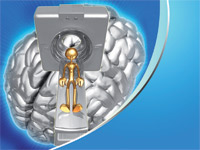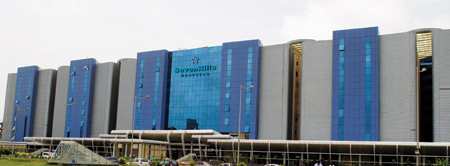 CT scanners facilitate visualisation, characterisation, and measurement of biological processes at the molecular and cellular levels in humans and other living systems
CT scanners facilitate visualisation, characterisation, and measurement of biological processes at the molecular and cellular levels in humans and other living systems
By Dhirendra Pratap Singh
The late 70s and early 80s saw entry of first ultrasound and single slice translate-rotate CT scanners in India, suddenly emerging like sphinx and transforming the status of imaging technology from just simple hardware producing flat two dimensional images into orthogonal cross-sectional images of higher special and temporal resolution which revealed much more in terms of human anatomy and offered higher accuracy in diagnosis. This placed the radiologist in the driver's seat in the clinical world and brought greater respect to him as the one whose acumen was necessary to get the diagnosis in most cases which was based on management of the diseases.
Molecular imaging enables the visualisation of the cellular function and the follow-up of the molecular process in human body without perturbing it. Thus, it was quickly adopted by the medical fraternity, giving a non-invasive method with clarity . This technique helps improve the treatment of diseases such as cancer, neurological and cardiovascular diseases by optimising the pre-clinical and clinical tests of new medication. They are also expected to have a major economic impact due to earlier and more precise diagnosis.
CT scanners facilitate visualisation, characterisation, and measurement of biological processes at the molecular and cellular levels in humans and other living systems. Molecular imaging is a key component of 21st century cancer management. The global efforts for quantitative imaging of tumor can lead to a more robust and effective monitoring of personalised molecular cancer therapy.
Treatment for cancer is traumatic as the disease grows inaccurately and partial diagnosis often leads to more traumas. Molecular Imaging can be very useful not only in oncology but in many more clinical areas.
High end imaging modalities need better image management and archival systems. The diagnostic outcome of molecular imaging is necessary to be made available to clinicians treating the patients. Healthcare IT and molecular imaging go hand in hand. If one wishes to exploit the real advantage of these systems, other should ensure effective distribution of these images to clinicians and integration with electronic medical records.
When a hospital plans to buy a multi-crore, hi-tech equipment, the initial few months of planning are typically spent over the question, “What return on investment (ROI) can we expect?” Most imaging equipments have gone through this phase and have matured in terms of both utility and viability. Molecular Imaging, the latest technology wave in diagnostic imaging is not an exception.
But for a diagnostic consultant return on investment is measured differently. How many times is a life saved due to timely diagnosis? How many times the quality of life has dramatically improved the treatment with accurate predictions and visualisation of the disease? Answers to these questions are the basis for real ROI.
Market
The demand for medical imaging products in the US market was $21.4 billion in 2010. The main causes of this growth are technological advances, along with an ageing population and changing trends in healthcare approaches. New scanners with expanded testing capabilities are also being adopted widely by hospitals and outpatient facilities to improve quality of care. Medical imaging equipment has posted demand of over $16 billion in 2010, which is 6.8 percent higher than the annual growth in the last two years. Picking up the biggest pace will be multi-sli

Be a part of Elets Collaborative Initiatives. Join Us for Upcoming Events and explore business opportunities. Like us on Facebook , connect with us on LinkedIn and follow us on Twitter , Instagram.






